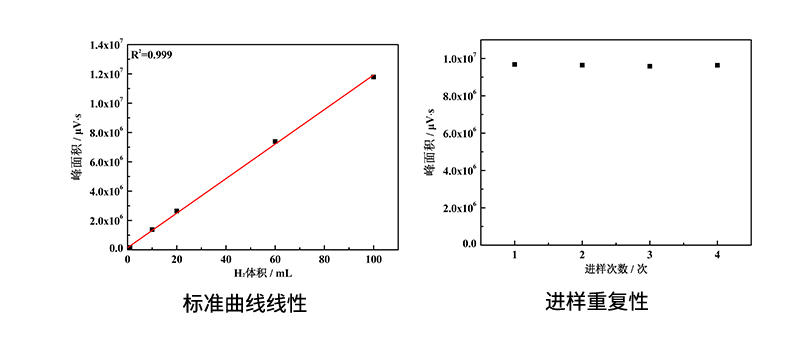Labsolar IV AI Automatic Online Trace Gas Analysis System is built upon Perfectlight Technology's years of experience in developing gas-tight glass reaction systems. It enhances the glass-sealed pipeline from the Labsolar IIIAG online photocatalytic analysis system by introducing new software control modules to enable automatic scheduled online analysis under specific gas-tight conditions.
Labsolar IV AI Automatic Online Trace Gas Analysis System can conduct experiments involving photocatalytic water splitting under negative pressure, photocatalytic CO₂ reduction under both atmospheric and slight negative pressure, as well as photocatalytic activity testing under specific temperature and pressure conditions.
Labsolar IV AI Automatic Online Trace Gas Analysis System utilizes a modular design consisting mainly of software and control units, all-glass circulation pipelines, automatic sampling modules, gas circulation modules, and customizable reactors.
● User-friendly software and control unit with a user-centric design for ease of operation;
● Fully automatic sampling module that performs non-chromatographic sampling, effectively reducing the length of the circulation pipeline and enhancing gas circulation efficiency;
● Customizable reactors of different volumes, enabling various gas-solid and gas-liquid-solid photocatalytic, photoelectrochemical, and photothermal reactions by simply replacing different reactor types;
● Open design with adjustable metal support for varying the height of glass pipelines according to specific experimental needs.
● Photocatalytic/Photoelectrochemical Water Splitting for Hydrogen/Oxygen production
● Photocatalytic/Photoelectrochemical Full Water Decomposition
● Photocatalytic/Photoelectrochemical CO₂ Reduction
● Photocatalytic Quantum Efficiency Measurement
● Photothermal Catalysis (Under Negative Pressure and Atmospheric Pressure)
● Electrocatalysis for HER, OER, CO₂RR

● Software Module: 32-bit control software and a 7-inch touchscreen, providing real-time display of internal system pressure, environmental temperature, humidity, and other parameters. After setting the sampling period and frequency, it can automatically control the operation of the sampling module, gas chromatograph, and vacuum pump;
● Automatic Sampling Module: This module is embedded within the system and performs non-chromatographic sampling, effectively reducing the length of the circulation pipeline, increasing gas circulation efficiency, and offering high chromatograph compatibility;
● Fully Automatic Carrier Gas Inlet: This feature enables precise control of carrier gas inlet volume, promoting gas circulation, and effectively preventing air interference caused by needle piercing;
● Vacuum Pump: Pumping rate: 6L/s; The system's control software automatically controls the pump's start and stop, operating intermittently and producing minimal noise. It includes a unidirectional solenoid valve to prevent oil back-suction;
● Gas Mixing Time: H₂, O₂ mixing time < 10 min; CH₄, CO mixing time < 30 min;
● Standard Curve Linearity: When the H₂ content is in the range of 100 μL to 10 mL, R² > 0.999;
● Reproducibility: For the same concentration, continuous sampling four times results in an RSD of < 3%;
● Passive Magnetic High-Speed Circulation System: Drive speed with three adjustable levels, with a maximum speed of 7000 r/min, providing strong circulation power. There are no electrical wires in the pipeline, eliminating the risk of hydrogen explosion and interference from electrolysis gas;
● Sampling Method: Automatic online sampling, with a quantitative loop located within the system's built-in automatic sampling module, performing non-chromatographic sampling;
● Circulation Pipeline: The narrowest pipeline has an inner diameter of 3 mm and is a non-small-bore chromatographic pipeline with low gas resistance;
● Permissible Carrier Gas Pressure Range: ≤ 0.35 MPa, suitable for complex configurations of gas chromatographs;
● Detection Range: For various trace gases such as H₂, O₂, CH₄, and CO;
● Detection Limit/μmol: H₂: 0.1; O₂: 0.2; CH₄/CO: 0.001;
● Reactor: It can be adapted for photocatalytic reactors, photoelectrochemical, and photothermal reactors, customizable to meet specific experimental requirements;
● Overall Dimensions/mm: 570(L)×300(W)×780(H);